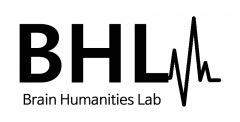The field of psychophysiology, which has developed as a sub-discipline of psychology since the early 1960s, has been discovered by research on media effects. The research has come up with a series of assumptions for several decades, which underlie the collection of bioelectrical measures and their interpretation as indicators of cognitive and emotional processes. In psychophysiological measurement, a flow of signal is captured and an attempt is made to interpret it. Normally, researchers of media effects using psychophysiology design experiments in which that information flow originates in the sensory intake of some form of mediated message. Implicit methods such as electroencephalography (EEG) and modern eye-tracking generate insights on cognitive perceptions and impact processes during media consumption. This approach is useful for analyzing and understanding a viewer’s behavior in various situations. The BHL research team creates valuable knowledge on emotional aspects and engaging dimensions of media usage or perception of editorial content.
